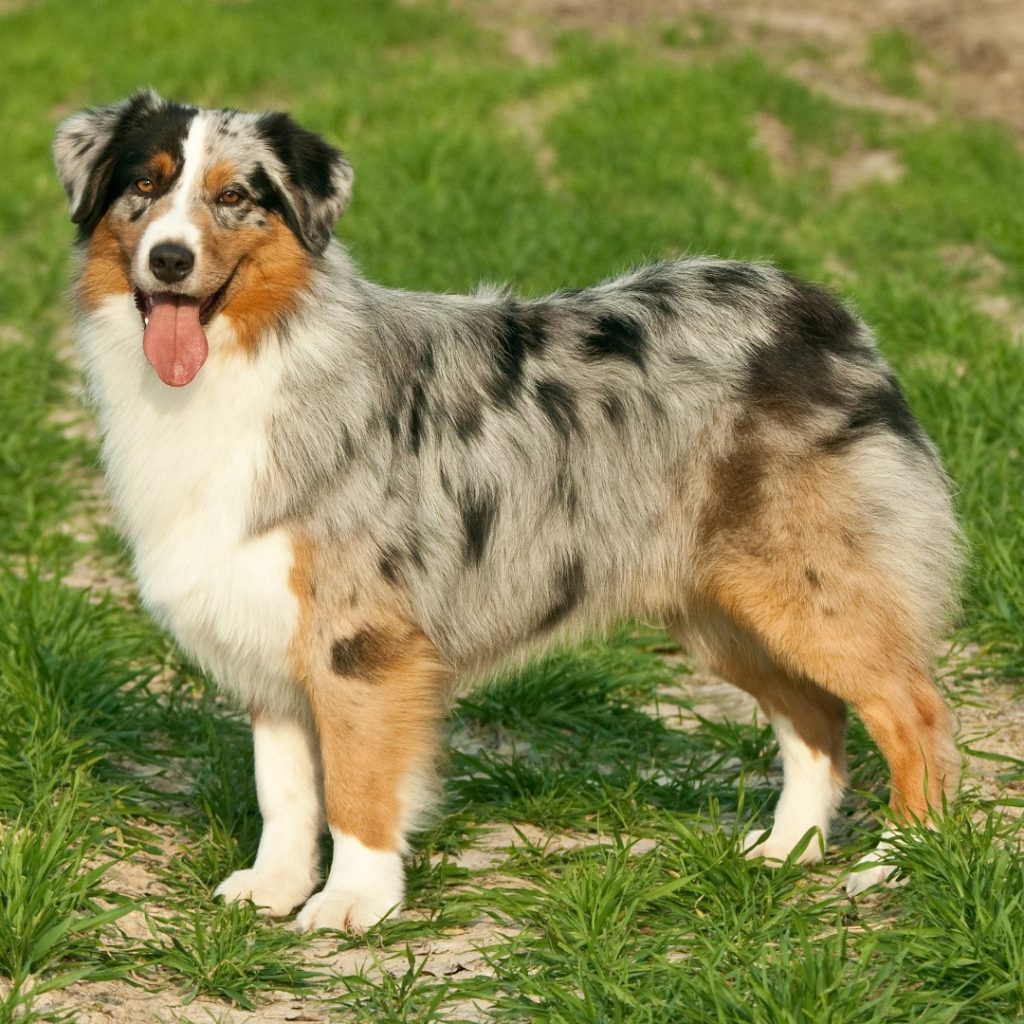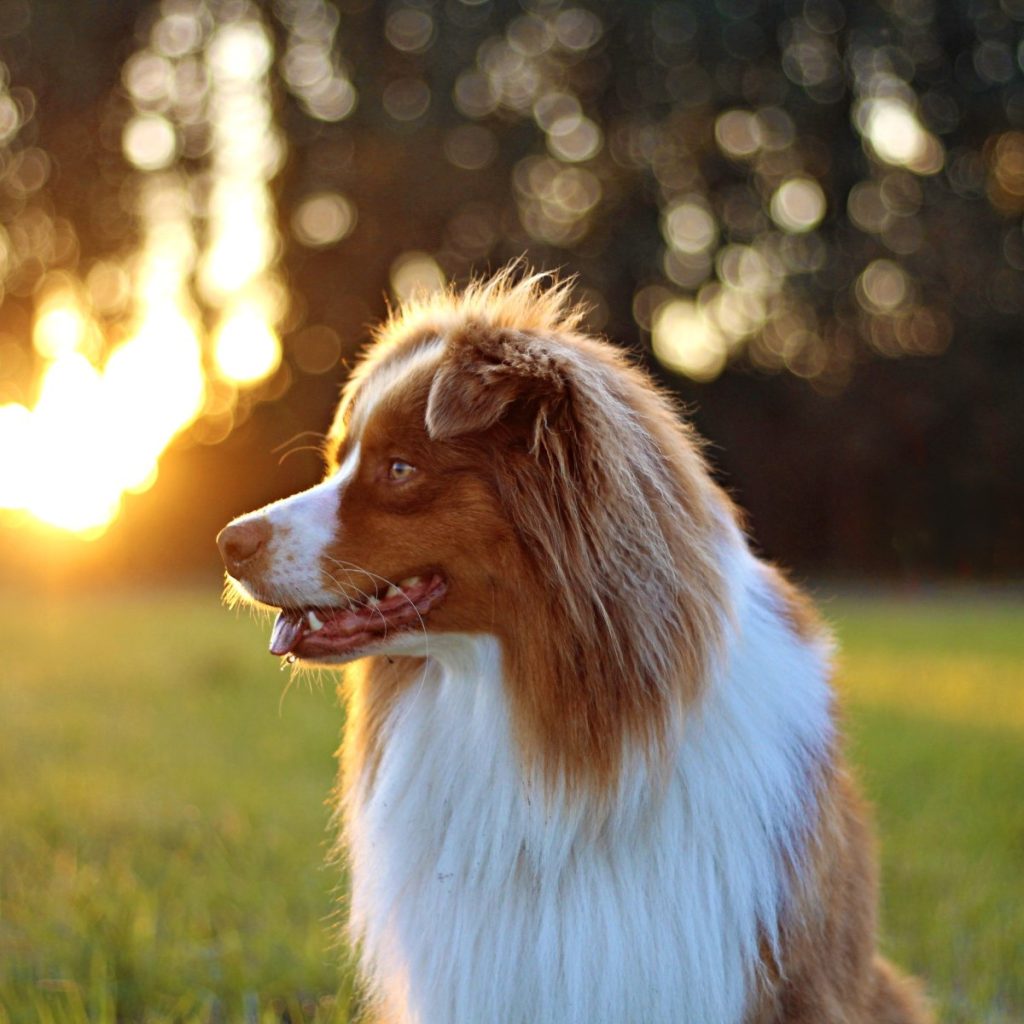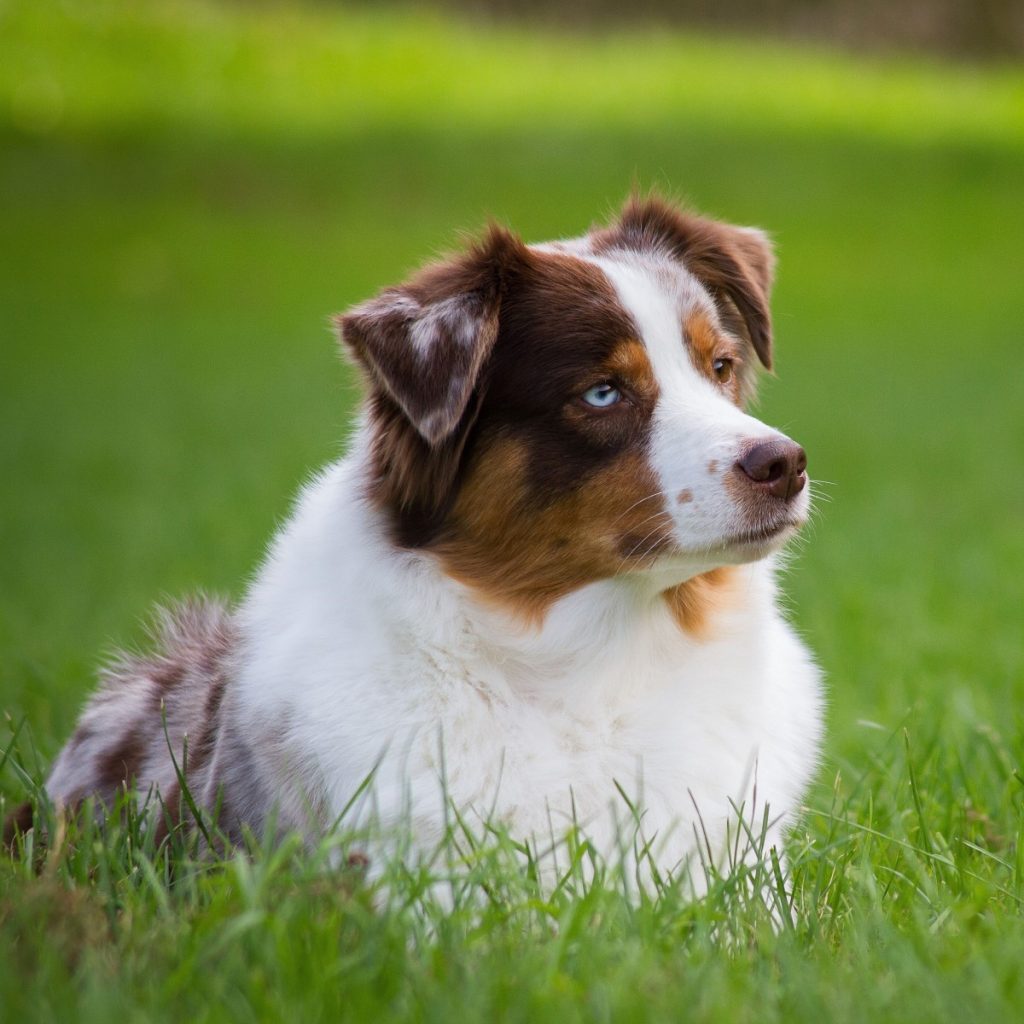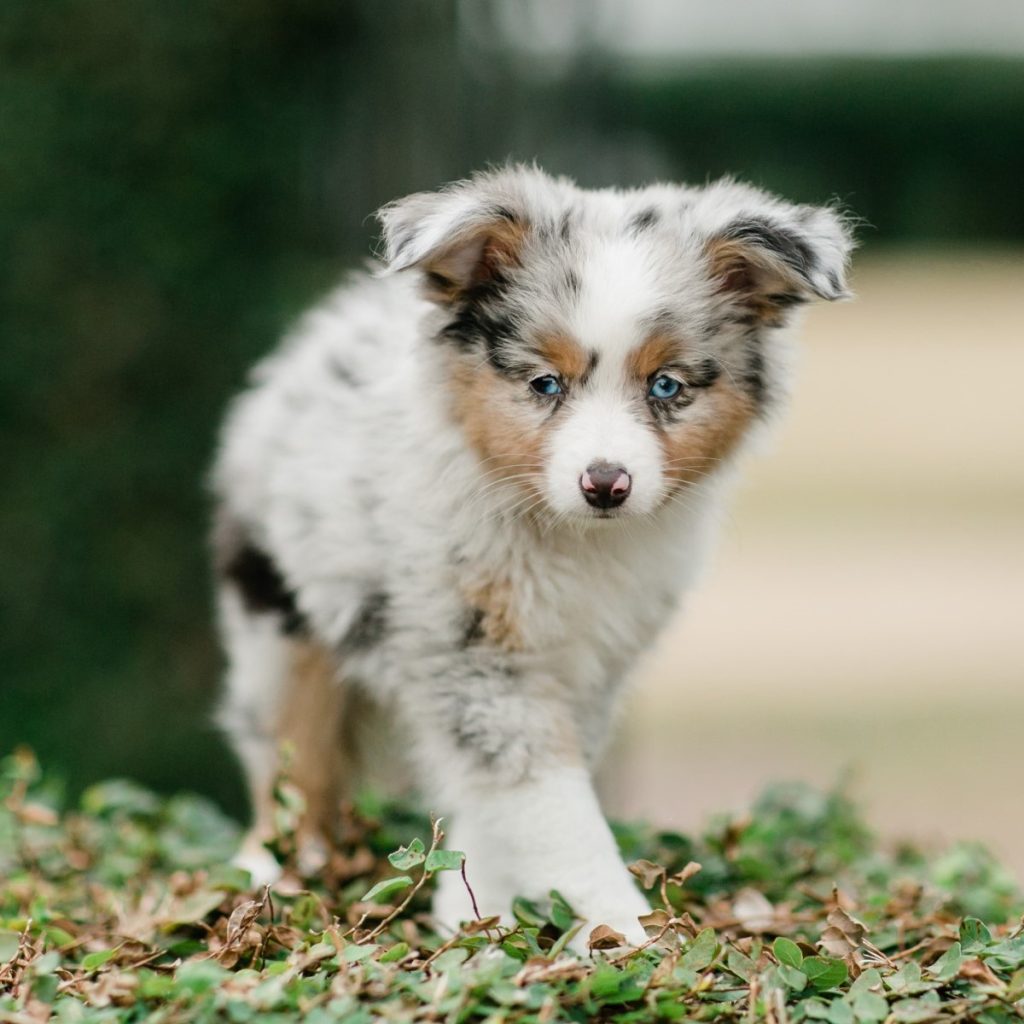Australian Shepherds’ Size
Classed as medium in size, Australian Shepherds can grow to stand around 46-58 centimetres tall, however sizes will vary. They can also weigh between 16 and 32kg, with females being slightly lighter and smaller in overall frame.
Australian Shepherds’ Common Health Conditions
Generally, Aussie Shepherds are a healthy breed. They don’t suffer from a whole host of common conditions, but there are some that we will touch on.
Vision problems are not uncommon in Australian Shepherds, being a collie breed they can also suffer from hereditary eye conditions such as progressive retinal atrophy, retinal detachment, abnormal development of the eye, cataracts and collie eye anomaly. All prospective puppy owners should request to see the parents’ eye certificates as all breeding dogs should be screened for these inherited conditions.
Hip dysplasia is another unfortunately common ailment for Aussies, with abnormal formation of hip sockets sometimes causing a slow degradation in their joints. This can lead to lameness and painful arthritis with age. This is another condition the parents should be screened for, and the results of testing should be made available to potential puppy buyers. Nutrition and being careful with exercise in early life help slow down the progression of hip problems. Keeping adult dogs in the healthy weight range, and physiotherapy are also essential to slowing down the development of osteoarthritis. Speak to your local vet team for more information about how you can keep your Australian Shepherd healthy.
Double merle Australian Shepherds are offspring that inherit two copies of the dominant merle gene. The practice of breeding merle Australian Shepherds is a debated topic, as these puppies are much more likely to suffer from developmental issues with their vision, hearing, and general wellbeing. These dogs often suffer from partial or full blindness and deafness, among other common genetic conditions.
If your Aussie Shepherd is showing any signs of sickness or bad health, the team at Greencross Vets can help! Contact us today and find your nearest clinic.

 Greencross Vets
Greencross Vets 





